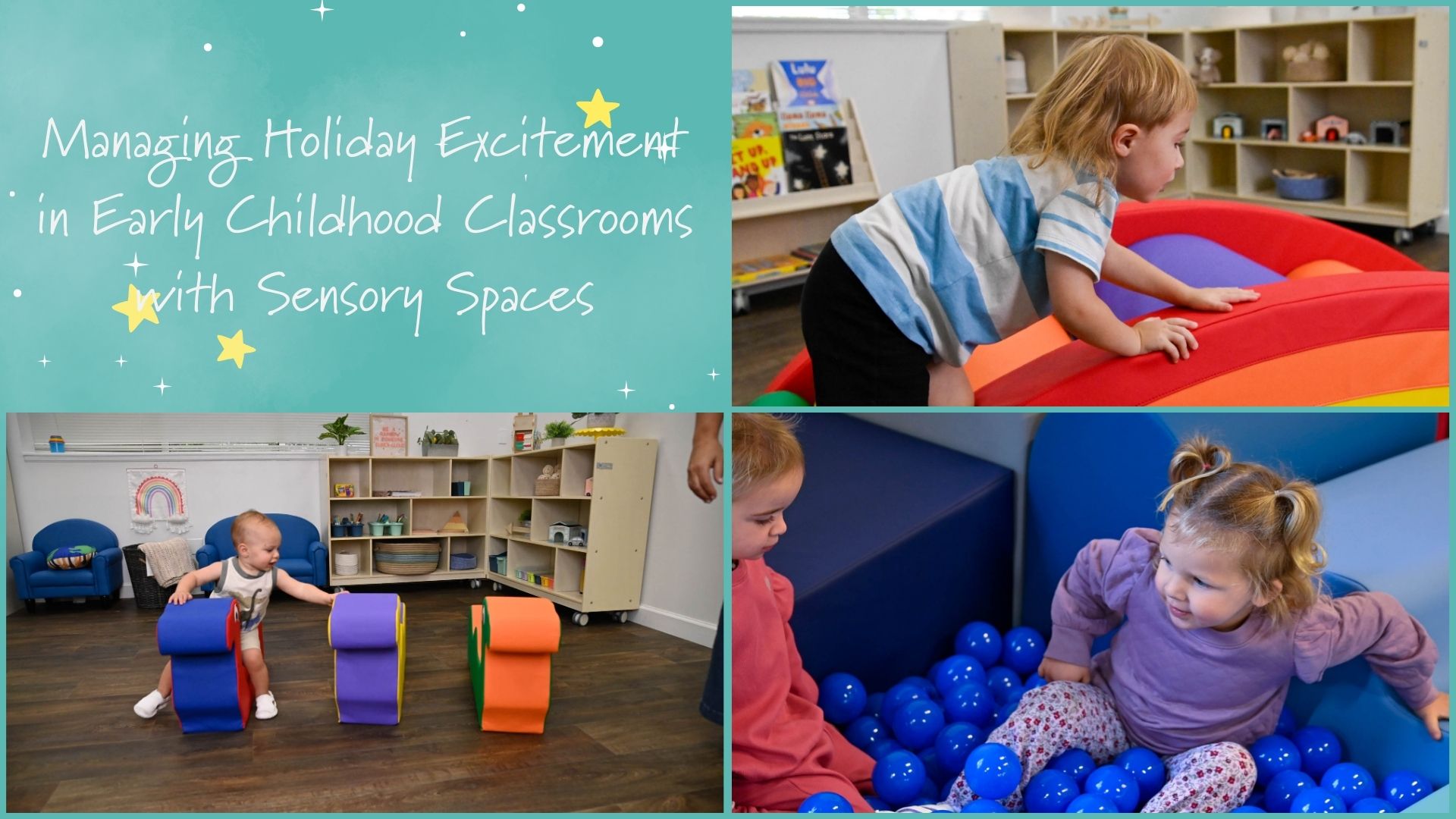
Managing Holiday Excitement in Early Childhood Classrooms with Sensory Spaces
The holiday season brings excitement and joy to the classroom, but for young children, the increased energy can also lead to overstimulation. Amid festive activities, sensory spaces offer a soothing retreat where children can unwind and regulate their emotions. With sensory tools like cushions, calming decor, and quiet corners, teachers can help balance holiday enthusiasm, creating a calm, structured environment where students feel secure. Here’s how sensory spaces can support classroom management during the busy holiday season.
Why Sensory Spaces Are Key During the Holidays
Young children often experience holiday excitement more intensely, and when paired with a change in routines, it can overwhelm them. Sensory spaces provide a designated place where children can retreat when they feel overstimulated. By offering a calm environment, teachers give students a chance to self-soothe and return to activities with renewed focus and composure. Sensory spaces are invaluable during this time of year, as they allow children to enjoy the season’s magic without feeling out of control.
Essential Elements of a Holiday-Friendly Sensory Space
Designing a sensory-friendly corner doesn’t have to be elaborate. A few thoughtful touches can turn a small area into a calming oasis. Here are some essentials that help create a peaceful, sensory-friendly environment, especially beneficial during the holidays:
- Comfortable Seating and Cushions: Cozy seating options, like Children’s Factory Loungers or soft floor cushions, provide a comfortable space where children can sit, lie down, or even curl up. This physical comfort is calming and helps children feel safe and secure, which is essential when they feel overwhelmed by holiday excitement.
- Quiet Corners with Room Dividers: A sensory area benefits from being a defined space, separated from the classroom’s holiday buzz. Using room dividers like Children’s Factory PlayPanels creates a small, private corner that helps children feel protected and encourages them to slow down and relax.
- Soft Lighting and Gentle Decor: While holiday decor can be vibrant, sensory spaces work best with subtle, calming colors and soft lighting. Instead of bright, flashy decorations, use natural hues or gentle blues and greens. Soft string lights or a small lamp create a cozy glow, giving children a soothing environment that contrasts with the high-energy holiday decorations elsewhere in the classroom.
- Engaging Sensory Tools: Items like squishy balls, textured fabric squares, or small plush toys can help children channel their energy into quiet, calming actions. These sensory tools allow children to explore textures or repetitive movements, helping them self-regulate by focusing on the gentle motions and touch, a technique that is especially useful for holiday overstimulation.
How to Integrate Sensory Breaks into Holiday Activities
Sensory spaces are not just for quiet moments; they’re essential tools for managing excitement during group activities. Consider setting up a routine where children are encouraged to take short sensory breaks before or after high-energy holiday events. If students become overstimulated, guide them to the sensory space for a brief “calm-down” period. A simple cue like “holiday pause” can remind children to use the sensory space when they need to reset.
Creating a Balanced Holiday Classroom Environment
Sensory spaces are an invaluable asset during the holidays, offering young children a place to recharge and find calm amid the season’s excitement. By incorporating soft seating, gentle lighting, sensory tools, and quiet zones, teachers can help children enjoy the holiday season in a way that feels both festive and manageable. When students feel supported in their emotional needs, they can better enjoy holiday activities, making the classroom a joyful and balanced space for everyone.
www.childrensfactory.com